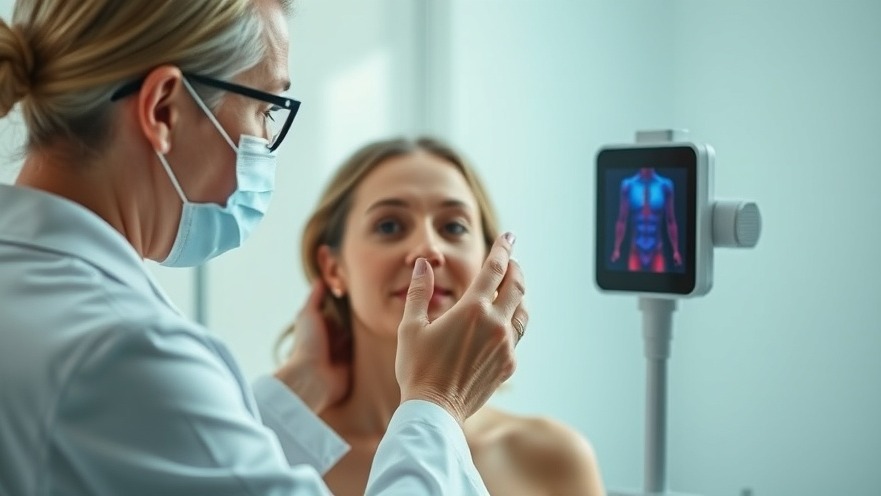
Understanding 3D Total-Body Photography in Dermatology
Adding 3D total-body photography (TBP) to usual care can significantly enhance dermatological practices, especially for patients at high risk of melanoma. A recent study published in JAMA Dermatology revealed that when healthcare providers integrated 3D TBP along with sequential digital dermoscopy imaging (SDDI) into their teledermatology services, the rate of skin excisions rose dramatically among participants. In this study involving 314 patients, those receiving the enhanced intervention showed a mean excision count of 5.73 compared to 3.99 in the control group.
The Study Findings: A Closer Look
In this clinical trial, 156 patients continued on their usual care while 158 were provided with the advanced imaging techniques. The results highlighted key differences in clinical outcomes:
Incidence of Melanoma: Fewer melanomas were detected in the group that received the 3D TBP and SDDI intervention, with 24 cases (35%) compared to 43 cases (64%) in the control group.
Keratinocyte Cancers: At the 12-month follow-up, the incidence of keratinocyte cancer was significantly higher in the intervention group (0.86) compared to the control (0.42).
Benign Lesions: Rates of benign lesion excisions increased in the intervention group, reinforcing the role of advanced imaging in proactive dermatological care.
The study also noted a discrepancy in melanoma diagnosis rates per person, which did not significantly differ between both groups (0.08 for intervention and 0.16 for control), strengthening the narrative that while the number of excisions increased, early detection risks did not proportionally escalate.
Impact on Patient Care: Why It Matters
For concierge health practitioners, these findings are particularly impactful. The notion that integrating advanced imaging systems can lead to more vigilant monitoring and an uptick in necessary skin excisions highlights a powerful tool for improving patient outcomes. By adopting these innovative techniques, practitioners can enhance their service offerings, ensuring better prevention strategies against skin cancers.
The Future of Dermatology and Technology Integration
As we embrace a future heavily influenced by technology, it’s essential to assess how digital tools like 3D TBP can revolutionize dermatologic practices. Emphasizing teledermatology with cutting-edge imaging allows greater convenience for patients while mitigating risks associated with missed diagnoses. Practices can become more efficient, ultimately leading to increased patient satisfaction and improved health outcomes.
Risk Factors and Challenges in Implementation
While the benefits of 3D TBP are evident, there are challenges that need consideration. These include the cost of equipment, the need for practitioners to be trained in using new technologies, and potential resistance from patients who may be accustomed to traditional dermatological examinations. Balancing these factors while striving for improved patient care will be crucial for successful integration.
Decisions You Can Make with This Information
As a concierge health practitioner, staying informed about technological advancements can directly impact your practice. Here are actionable steps you can take:
Evaluate Current Tools: Assess the current technologies in use within your practice and how they align with new findings from recent studies.
Consider Training Programs: Stay ahead by investing in training for your staff to utilize teledermatology tools effectively.
Engage Patients: Discuss the benefits of advanced imaging techniques with your patients to ensure they understand the value of these services.
Embracing new practices not only meets the evolving expectations of your patients but also positions your practice as a leader in innovative health solutions.
As healthcare constantly evolves, consider looking into the integration of 3D TBP technology into your practice. This could enhance your service offering and ultimately, improve outcomes for your dermatology patients.
 Add Row
Add Row  Add
Add 






Write A Comment